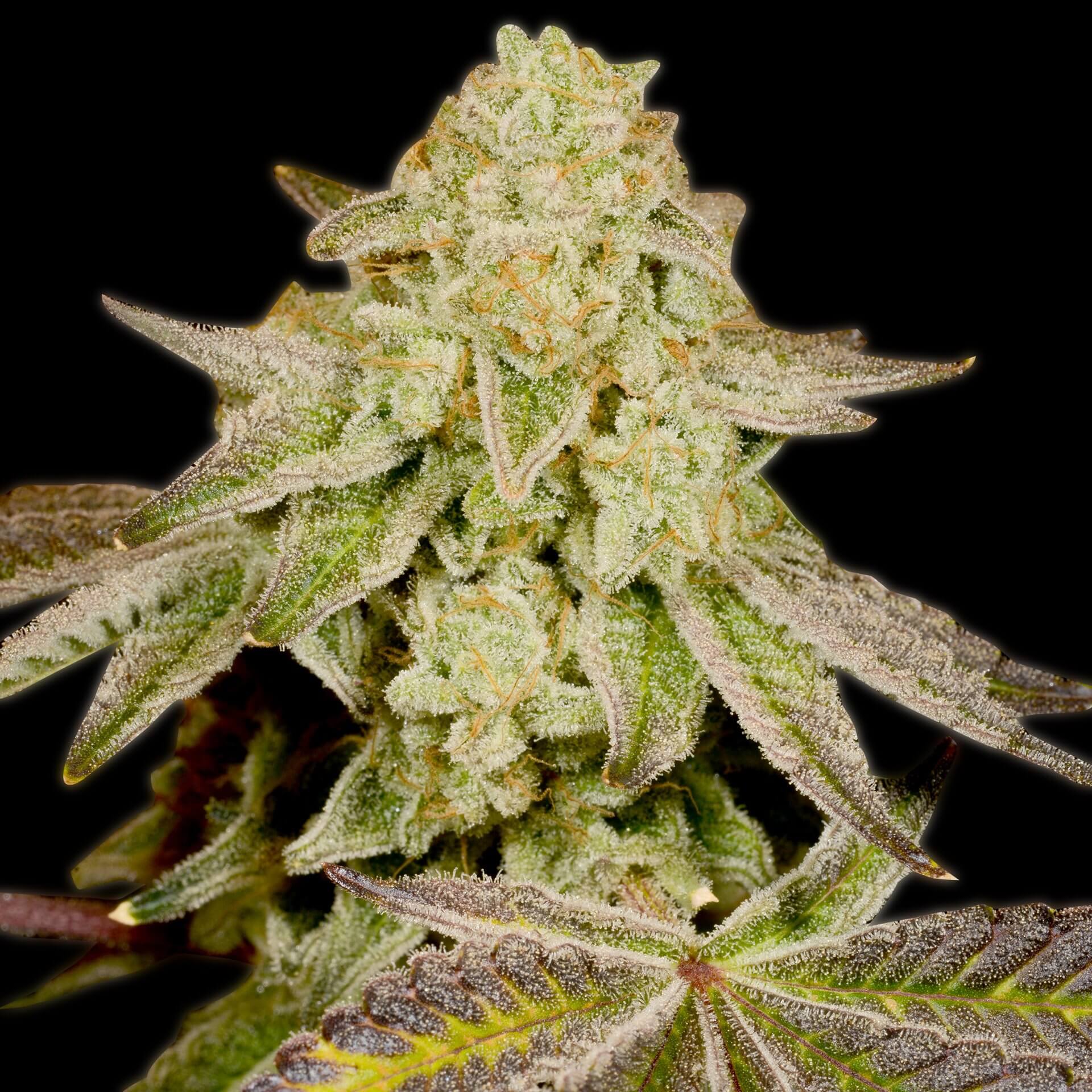

General Info
Moderate
to Grow
9%
THC
Caryophyllene, Myrcene, Pinene
Growth Stats
Height
30 in - 78 in
Flowers in
8 - 9 weeks
Harvest in
October
Yields
1,300 g / m2
Feelings & Flavors
Relaxed
Happy
Uplifted
Earthy
Woody
Pine
Product Video
Description
The History of Cannatonic Seeds
Cannatonic seeds graced the cannabis landscape in the early 2000s and were a hybridization breakthrough due to their unique genetics. The Spanish company Resin Seeds was the first to create this strain, which has become a favorite among cannabis enthusiasts.
Cannatonic Seeds’ Genetics Journey
Cannatonic strain was made by crossing two potent strains, the MK Ultra and G13 Haze. This combination resulted in a balanced hybrid of 50% Sativa and 50% Indica.
How to Germinate Cannatonic Seeds
Germination is the beginning of a potent Cannatonic plant. The paper towel technique is the most efficient way to germinate these seeds. Here are important steps to follow:
- Collect the necessary materials for germination, high-quality Cannatonic seeds, paper towels, sealable plastic bags, distilled water, and two clean plates. Ensure your work area is clean.
- Dampen two paper towels with distilled water. Ensure they are wet but not dripping. Place a damp paper towel on a clean plate.
- Spread the Cannatonic seeds evenly over the damp paper towel. Use the second damp paper towel to cover the seeds.
- Gently sandwich the seeds between damp paper towels with the second plate. This setting fosters germination in dark, humid conditions.
- Slide sealed plates into a plastic bag to create a micro greenhouse. Maintaining the correct moisture and humidity for germination is essential.
- Store packaged plates somewhere warm and dark. Keeping them warm and dark is crucial. Ideal germination temperatures are 70-90°F.
- After 2-7 days, examine your seeds. See if seeds sprout taproots. Germination times vary by seed quality and environment, so be patient. Some seeds sprout faster, others later.
- Carefully transfer germinated seeds into a growth medium after the taproot emerges. Carefully place the seeds in the medium with the taproot facing down.
- Keep the growing medium wet but not soggy. For best growth, provide enough light and keep the temperature between 70-80°F. As seedlings grow, gradually increase light and tailor care to plant needs.
Why are Feminized Seeds Better than Regs?
Feminized seeds are popular for various reasons. Firstly, they produce female plants efficiently and reliably. Feminized seeds are engineered to exclude male plants, resulting in a larger yield of cannabinoid-rich flowers. Growers with limited space or who want a consistent, high-quality harvest benefit from this. Feminized seeds simplify cultivation and maximize yield by eliminating the need to detect and remove male plants, which don't grow buds and can pollinate female plants.
Additionally, feminized seeds save time and resources. It greatly eliminates the danger of inadvertent pollination, which can result in seedy buds instead of resinous flowers, by focusing entirely on female plants. This tailored method lets farmers focus on strong, resinous plants to maximize cannabinoid-rich flower production.
Growing Cannatonic Seeds
Should I Grow Cannatonic Seeds Indoors or Outdoors?
Cannatonic seeds can thrive indoors or outdoors, offering flexibility based on your preferences and circumstances. Cannatonic grows to 3 to 4 feet indoors, making it excellent for locations with limited vertical space. Outdoors, they can grow to 4 to 6 feet.
Growing Cannatonic Indoors
Indoor Cannatonic plants have a flowering period lasting 7–9 weeks. After the vegetative stage, plants normally have a 12-hour light/dark cycle.
Benefits
- Indoor cannabis seed cultivation offers complete control over temperature, humidity, light cycles, and soil quality. Growers can optimize plant development and yields by managing these elements.
- Indoor gardening allows all-year-round cultivation regardless of weather or season. This allows planning flexibility and avoids temperature and geographical limits on outdoor growth by ensuring a constant and continuous harvest cycle.
- Indoor cultivation reduces outside plant pests and illnesses. Farmers can sterilize, air filter, and treat their growing environments with organic insecticides to protect Cannatonic plants from pests and illnesses.
Any drawbacks of growing Cannatonic Seeds indoors?
- Indoor cultivation can limit space, affecting plant development resulting in lower yields or the need for regular maintenance to regulate height.
- Indoor growing involves artificial lighting, ventilation, and climate control, which can drastically raise electricity costs, affecting production costs.
Growing Cannatonic Seeds Outdoors
Northern Hemisphere breeders can plant their Cannatonic seeds outdoors in April for harvest in mid-October.
Pros
- Outdoor cultivation provides free, ample sunshine, allowing plants to thrive. Outdoor plants also benefit from fresh air and natural circumstances, boosting growth and terpene profiles.
- Cannatonic plants can grow up to 4 to 6 feet tall outdoors, yielding more than indoor cultivation.
- Grow lights, ventilation systems, and other indoor cultivation equipment are unnecessary while growing outdoors, saving money.
Cons
Cannatonic plants are vulnerable to environmental variables when grown outside. Extreme temperatures, rain, and storms can stress plants, harming their development and health.
The Best Grow Medium for Cannatonic Seeds
Cannatonic seeds thrive in a grow medium that provides a nutrient-rich, well-aerated environment. An ideal starting soil for these seeds can be a combination of high-quality soil, perlite, and coco coir in a ratio that allows for good drainage but retains moisture. Adding compost or organic nutrients to the medium can guarantee a consistent supply of nutrients needed for strong plant growth.
The Best Climate for Cannatonic Seeds
Cannatonic seeds grow best in a moderately warm and sunny climate, similar to the Mediterranean. Temperatures during the day between 70 and 80° and somewhat colder at night—typically not falling below 50 to 60°F—are ideal for cannatonic cultivation. These plants benefit from a dependable, mild climate with humidity levels generally between 40 and 50 percent during the vegetative stage and between 50 and 60 percent during the flowering stage.
Problems to Look Out For When Growing Cannatonic Seeds
Growing Cannatonic seeds requires constant attention to detail to avoid various problems that could harm the plants. Look for any possible nutrient deficiencies, such as calcium or nitrogen, which can show up as yellowing leaves or slowed growth. Watch for common pests that can damage your plants, such as caterpillars, spider mites, and aphids. Furthermore, watch out for illnesses like tobacco mosaic virus, which results in mottling or discoloration, and white powdery mildew, which manifests as a white, powdery substance on leaves. Mold can also be a problem, especially in humid environments, and if left unchecked, it could result in rot.
How Difficult is it to Grow Cannatonic?
Cannatonic strain is moderately difficult to row as it requires constant monitoring of the plant’s response to nutrients.
Are Cannatonic Seeds Suitable for Beginners?
Cannatonic seeds may not be an ideal option for novices as they require some experience to ensure healthy growth.
How Much Do Cannatonic Seeds Yield?
When grown indoors, cannatonic seeds can yield 400–500 grams per m², and outdoors, 250–400 grams per plant for farmers who harvest in early October.
How to Get Better Yields from Your Cannatonic Seeds
Training your Cannatonic plants by monitoring their growth and manipulating their shape can increase yield.
The Best Grow Techniques for Cannatonic
LST
One useful technique for shaping cannatonic plants without putting them under a lot of stress is low-stress training. It entails softly bending or tying down branches to manipulate the plant's growth gently. LST promotes horizontal growth and canopy expansion in this way, improving light penetration to the lower branches of the plant. This method helps maintain an even height and encourages an even distribution of light, which is especially helpful for indoor growers with limited vertical space. LST also promotes the growth of additional bud sites, which raises yields. Growers can produce a more robust and productive canopy, leading to healthier Cannatonic plants, by controlling the growth in this way.
SCROG
Training cannatonic plants horizontally with a screen or netting maximizes light exposure and encourages an even canopy. To apply SCROG, position the plants at a low height beneath a screen and direct them to grow laterally, distributing light equally among several bud sites. Because it makes the most of the available space and light sources, this method is especially beneficial for indoor growers as it improves bud development and yields. SCROG promotes more consistent and regulated growth in the plant beneath the screen, which improves light penetration and airflow and, in turn, raises the caliber of the buds that are harvested.
Supercropping
Supercropping involves gently stressing and adjusting the plant's stems to improve light exposure and increase bud development in Cannatonic plants. Using this technique, the stems are gently bent or pinched to cause minor damage without endangering the plant's general health. This enables the plants to refocus their energy on the impacted regions, encouraging the development of several primary bud sites. This method is beneficial because it promotes lateral growth, which results in more colas and a higher yield of resinous buds. Additionally, supercropping aids in controlling plant height, ensuring that it stays within the ideal range for improved light distribution.
What does a Cannatonic plant look like?
A fully grown Cannatonic plant has broad, deep green leaves and dense, resinous buds. Its comparatively balanced structure features thick colas and a robust central stem encircled by lateral branches. The leaves are distinguished by their slightly broader, indica-like shape, serrated edges, and vivid green color. The buds are compact and covered in sticky trichomes during the flowering stage, giving off a faint, woodsy, and earthy scent.
Where Can I Buy Cannatonic Seeds?
If you’re interested in purchasing premium Cannatonic seeds, Premium Cultivars offers feminized and autoflower cannabis strains.
How do I Buy Cannatonic Seeds?
It's simple to purchase Cannatonic cannabis seeds from Premium Cultivators. First, you need to log in to the online cannabis seed bank, browse the cannabis seed selection, and select the desired amount from the various pack sizes—three, six, twelve, twenty-four, or bulk. Premium Cultivars accepts all major credit and debit cards, including American Express, Mastercard, Visa, and Discover. Additionally, free delivery is a guarantee for all USA customers on orders over $100.
Why Buy from Premium Cultivars

Major Cards Accepted
Securely purchase premium cannabis seeds using Visa, Mastercard, American Express, and Discover

3-5 Day
Delivery
Fast, reliable shipping ensures your cannabis seeds arrive within 3-7 business days
Germination Guarantee
We offer a Guaranteed Germination policy for your cannabis seed order
Federally
Compliant
All cannabis seeds comply with federal regulations, ensuring legal purchase and delivery
Replacement Guarantee
We offer a replacement guarantee for any issues with your cannabis seed order
Authentic
Genetics
Premium Cultivars provides authentic, high-quality cannabis seeds genetics for optimal growth
Cannatonic Seeds
- $45.00
- $45.00
- Unit price
- per
- Choosing a selection results in a full page refresh.






















